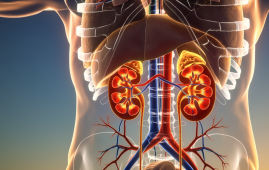

People who have had cancer frequently feel persistent pain, but a new study suggests that staying physically active may help reduce its severity. The study was published in Cancer.
Although being physically active has been demonstrated to alleviate a variety of pains, its impact on cancer-related discomfort is unknown. To conduct the study, a team led by senior author Erika Rees-Punia, Ph.D., MPH, of the American Cancer Society, and first author Christopher T.V. Swain, Ph.D., of the University of Melbourne in Australia analyzed data from 51,439 adults without a history of cancer and 10,651 adults who had been diagnosed with cancer previously.
Participants were asked, “How would you rate your pain on average?” with responses ranging from 0 (no pain) to 10 (worst agony possible). Participants were also asked about their regular physical activities.
According to US recommendations, moderate-intensity aerobic physical activity should last 150 minutes (2 hours 30 minutes) to 300 minutes (5 hours) per week, while vigorous-intensity aerobic physical activity should last 75 minutes (1 hour 15 minutes) to 150 minutes (2 hours 30 minutes) per week.
Based on the replies of participants, the authors discovered that higher physical activity was associated with decreased pain intensity for both cancer survivors and those who had never had cancer. The extent of the link was identical for both groups of people, implying that exercise may lower cancer-related pain in the same way that it does for other types of pain that have previously been researched.
Among individuals with a previous cancer diagnosis, those who exceeded physical activity requirements reported 16% less moderate-to-severe pain than those who did not fulfill physical activity standards. Furthermore, compared to people who stayed inactive, those who were regularly active or started active in old age reported reduced discomfort.
Dr. Rees-Punia said, “It may feel counter-intuitive to some, but physical activity is an effective, non-pharmacologic option for reducing many types of pain. As our study suggests, this may include pain associated with cancer and its treatments.”
More information: Physical activity and pain in people with and without cancer, Cancer (2024). DOI: 10.1002/cncr.35208. doi.wiley.com/10.1002/cncr.35208
more recommended stories
 36-Week Pre-eclampsia Screening May Reduce Term Risk
36-Week Pre-eclampsia Screening May Reduce Term RiskA New Preventive Strategy for Term.
 Cardiovascular Risk and Sudden Cardiac Death in Diabetes
Cardiovascular Risk and Sudden Cardiac Death in DiabetesRising Sudden Cardiac Death (SCD) Risk.
 Poor Kidney Function and Alzheimer’s Biomarkers Explained
Poor Kidney Function and Alzheimer’s Biomarkers ExplainedPoor kidney function may influence levels.
 Walking Speed Before Hip Replacement Predicts Recovery
Walking Speed Before Hip Replacement Predicts RecoveryNew Evidence Points to a Simple,.
 Neuroblastoma Drug Combo Extends Survival in Models
Neuroblastoma Drug Combo Extends Survival in ModelsA Promising Shift in High-Risk Neuroblastoma.
 How Soybean Oil Impacts Weight Gain and Metabolism
How Soybean Oil Impacts Weight Gain and MetabolismWhy Soybean Oil May Affect Metabolism.
 Coffee and Cognitive Function: Evidence Review
Coffee and Cognitive Function: Evidence ReviewA new narrative review in Cureus.
 Colorectal Cancer Screening Rates Low in Adults 45–49
Colorectal Cancer Screening Rates Low in Adults 45–49Recent UCLA research reveals that colorectal.
 Gut Immune Cells and Long-Lasting Antiviral Protection.
Gut Immune Cells and Long-Lasting Antiviral Protection.Breakthrough Findings on How Gut Immune.
 Mild Pancreatic Duct Dilatation Signals Higher Cancer Risk
Mild Pancreatic Duct Dilatation Signals Higher Cancer RiskEarly Structural Changes Offer Critical Clues.

Leave a Comment